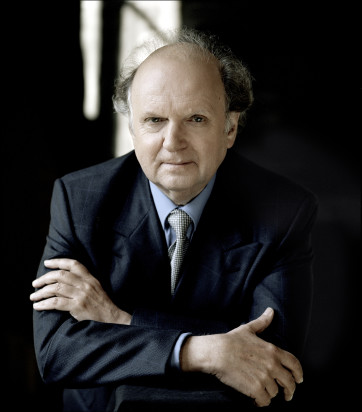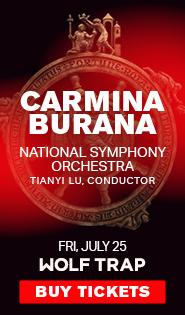Janowski brings a unique perspective to familiar music with NSO

Marek Janowski conducted the National Symphony Orchestra Thursday night.
On the surface, this week’s National Symphony Orchestra was not the most adventurous-looking program of the season. Each of the concert’s two chestnuts, Bruch’s Violin Concerto No. 1 and Brahms’s First Symphony, had been heard in the last three years.
Yet the event marked a welcome return to the podium for Marek Janowski, former artistic director of the Rundfunk-Sinfonieorchester Berlin, and the NSO debut of violinist Stefan Jackiw. Even so, a surprisingly small audience was present in the Kennedy Center Concert Hall on Thursday night.
Janowski, now 79, made the strongest statement interpretatively in the opening work, the Overture to Carl Maria von Weber’s Euryanthe. It is an opera one would love to hear Washington Concert Opera present, and this was the NSO’s first performance of its beautiful overture since 2001.
The fast opening section did not quite come together cohesively, the result of some disparity between Janowski’s beat and the musicians’ response. The beauty of the piece shone through in the mysterious section of music for eight solo violins, with the four lead chairs in each section producing a soft sound both brilliant and dark like polished mahogany. An intensely played quasi-fugue section brought the piece back to a more harried conclusion, with a satisfying weight to its final chords.

Stefan Jackiw
Jackiw is a known quantity from his 2012 Kennedy Center recital, as well as previous outings with the Baltimore Symphony Orchestra. With a sweet, focused sound he excelled in the Adagio movement, with his tightly coiled vibrato giving a nervous edge especially to the double-stops that feature prominently in the outer movements. In the finale Jackiw tended to rush the beat, creating a frantic yet impetuous energy.
Janowski’s sure hand guided the smaller chamber-sized orchestra called for in Bruch’s score through a skillful accompaniment. Everything was clear, including Jackiw’s fine playing in the exultant first-movement cadenza and the passionate passage on the G string in the third movement, albeit a bit bland in result.
The same could not be said of Janowski’s surprising approach to the Brahms. The playing he elicited from the NSO in this familiar work was both old-school, with lots of effusive strings, and unexpected as far as choices of tempo and articulation. In the first movement, Janowski set an insistent drumbeat tempo even in the slower introduction, smoothed over with legato surges of lush string sound. While some of the woodwind solos were strained, the contrabassoon of Lewis Lipnick had some delightful time in the sun.
A brash tempo in the second movement made it more difficult to luxuriate in the fine playing of principal oboist Nicholas Stovall, supported again by warm strings. A similarly impatient approach to the third movement — both are marked “sostenuto” or “grazioso” in tempo — made that happy-go-lucky piece more boisterous, and seem even shorter than it is.
This symphony often succeeds or fails on its last movement, and here Janowski did extraordinary things, drawing out maximum drama from its complicated three-part form. Principal horn player Abel Pereira was flawless on the horn solo, a rustic tune Brahms wrote down after hearing it played on an Alphorn, and the trombones broke their silence in the first three movements in a memorable way to add a mysterious, solemn element to the finale. The rush of the first three movements dissipated completely in the elegiac conclusion, with its hymn-like main theme.
The program will be repeated 8 p.m. Saturday. kennedy-center.org; 202-467-4600.


